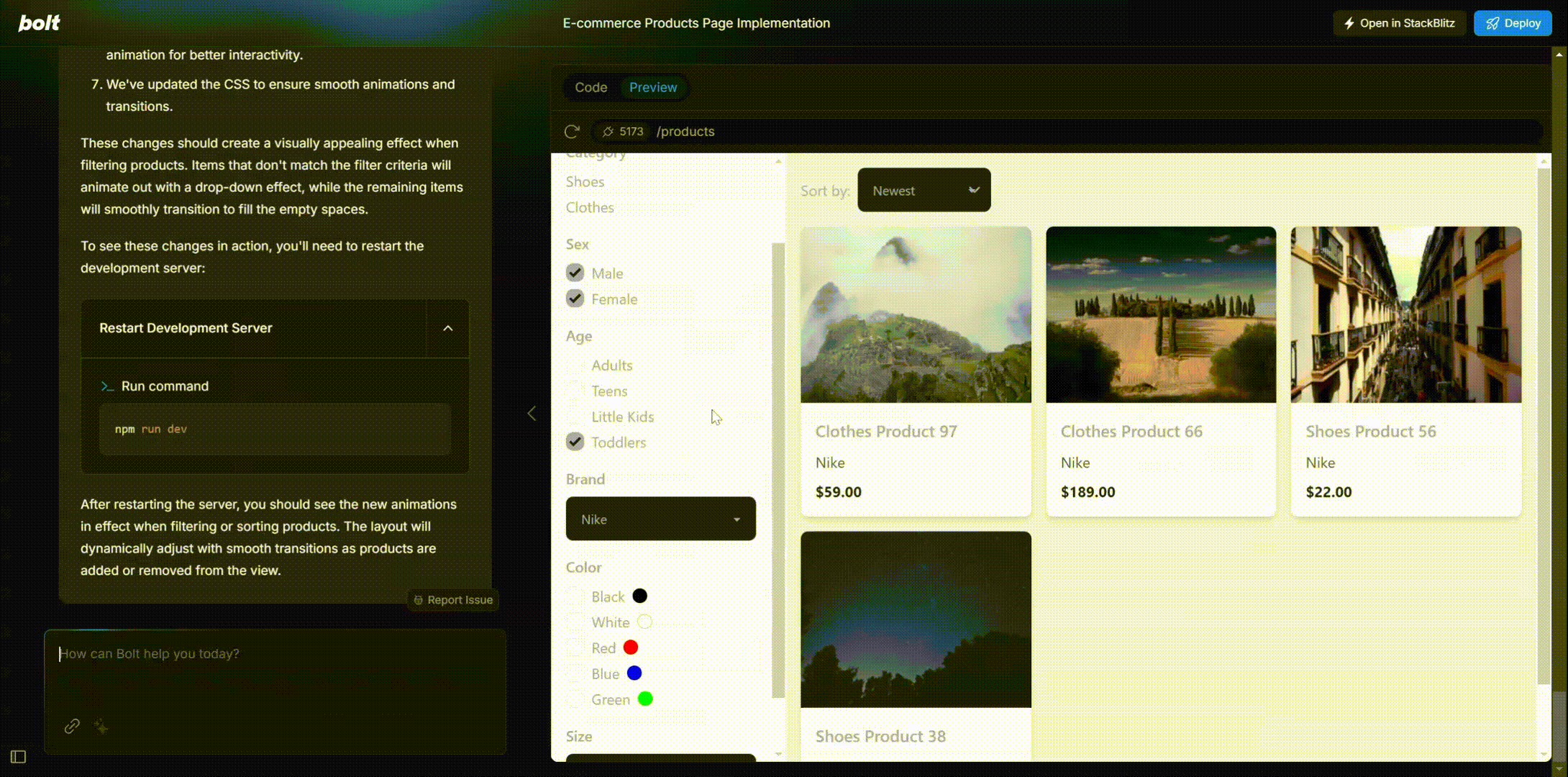Bolt.new: Build and Deploy Full-Stack Apps in Your Browser With AI
bolt.new is an AI-powered, browser-based development platform for creators, indie hackers, and small teams.
It lets you build, edit, and launch full-stack applications with natural language prompts and real code.
Everything runs in the browser, so you don’t need to install local tools or set up environments.
What Is Bolt.new?

Bolt.new combines an AI coding engine with a web-based IDE. It’s built on StackBlitz’s WebContainers, which means you get a complete dev environment in your browser:
- Code editor, terminal, and file navigation
- AI code generation with Anthropic Claude 3.5 Sonnet (and others)
- Live previews and built-in deployment to Netlify
- Team collaboration features for agencies and group projects
The pricing model is token-based. You start free, then move to paid plans (from $20/month) if you need higher usage.
How It Works
- Prompt: Type what you want to build. Example: “Build a Next.js marketing site with Tailwind, contact form, and Stripe checkout.”
- Generate: Bolt.new scaffolds a working project with code, components, and a live preview.
- Refine: Add more prompts to expand features. Example: “Make the hero animate, add user authentication, connect to Supabase.”
- Deploy: Push to Netlify directly from the IDE, no extra setup required.
- Collaborate: Invite team members, share templates, and manage billing in one place.
I tested bolt.new by asking it to build a simple landing page for a side project. I opened the browser IDE and typed a prompt:
“Create a Next.js landing page with Tailwind. Include a hero section with a headline, a contact form, and a footer with social links.”
Within about a minute, Bolt.new generated a complete Next.js scaffold. The file structure was already in place, Tailwind was configured, and the preview pane showed a working site.
From there, I refined the design by adding another prompt:
“Make the hero section animate in with a fade effect. Style the button with a gradient background.”
The edits appeared instantly, and the preview updated in real time. Each change was reflected in the code editor, so I could see exactly what had been added.
Finally, I deployed the project straight to Netlify from inside Bolt.new. The process took less than five minutes from first prompt to a live site with a working form and styled sections.
The experience felt like pair programming in the browser: I described what I wanted, Bolt.new scaffolded and refined it, and I had full control to tweak or adjust the code directly.
What People Build With Bolt.new
Bolt.new is most useful for projects that need to get off the ground quickly.
Because it generates full frameworks, connects common integrations, and deploys directly from the browser.
It’s a good fit for small teams, freelancers, and creators who want working apps without days of setup.
In practice, most users build projects like:
- E-commerce sites with product pages, carts, and Stripe/PayPal checkout
- Dashboards and task managers with auth flows, drag-and-drop, and real-time sync
- Agency and portfolio sites for clients, complete with CMS integrations
- Educational platforms for interactive tutorials and live code demos
- Startup MVPs to validate SaaS or fintech ideas quickly
- Landing pages and personal portfolios for creators and freelancers
Unique Features
- Full-stack dev entirely in-browser
- Instant scaffolds for modern frameworks (Next.js, React, Tailwind, TypeScript)
- Live error handling and asset uploads
- “Discussion Mode” to debug or refine before generating code
- One-click deployment via Netlify
- Collaboration tools with roles, templates, and shared folders
Pros
- No install or local setup
- AI generates code you can fully access and edit
- Clean starting scaffolds with sensible defaults
- Fast iteration for client work, hackathons, and pitches
- Team-friendly with shared templates and central billing
Cons
- Token usage can spike on complex apps
- Limited debugging for advanced authentication or multi-service flows
- Scaling larger projects often needs manual fixes or migration to a traditional IDE
- UI customization still requires hand coding
- Some duplicate or messy code in bigger projects
Limitations and Learning Curve
Bolt.new is easier than a traditional IDE but still assumes some coding knowledge.
Beginners can build working apps with prompts, but refining logic or fixing complex integrations often requires manual edits.
Backend-heavy projects, advanced auth systems, or enterprise-grade apps may push users back to classic development environments.
Bottom Line
bolt.new gives creators and small teams a fast way to move from idea to working app.
It’s not without its quirks (and you will have to pay to actually do anything useful with it), it’s a great platform for dipping your toes into the world of vibe-coding.
It’s especially useful for:
- Landing pages
- Dashboards
- SaaS MVPs
- Agency client sites
- Teaching and coding platforms
It works best for quick builds, prototypes, and small-to-medium apps.
Bigger, more complex projects may require token management, cleanup, and eventual migration into a traditional dev workflow.


